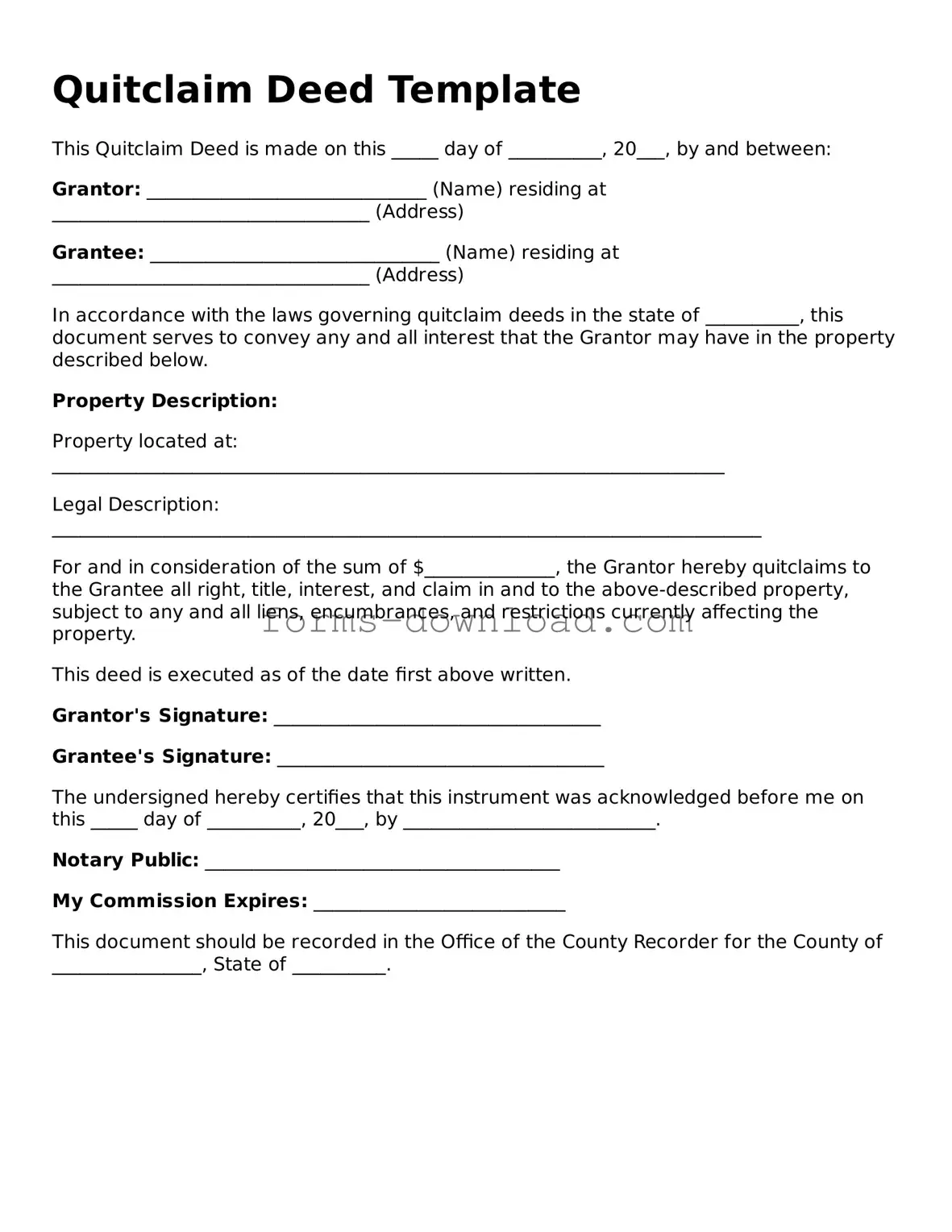Quitclaim Deed Template
This Quitclaim Deed is made on this _____ day of __________, 20___, by and between:
Grantor: ______________________________ (Name) residing at __________________________________ (Address)
Grantee: _______________________________ (Name) residing at __________________________________ (Address)
In accordance with the laws governing quitclaim deeds in the state of __________, this document serves to convey any and all interest that the Grantor may have in the property described below.
Property Description:
Property located at: ________________________________________________________________________
Legal Description: ____________________________________________________________________________
For and in consideration of the sum of $______________, the Grantor hereby quitclaims to the Grantee all right, title, interest, and claim in and to the above-described property, subject to any and all liens, encumbrances, and restrictions currently affecting the property.
This deed is executed as of the date first above written.
Grantor's Signature: ___________________________________
Grantee's Signature: ___________________________________
The undersigned hereby certifies that this instrument was acknowledged before me on this _____ day of __________, 20___, by ___________________________.
Notary Public: ______________________________________
My Commission Expires: ___________________________
This document should be recorded in the Office of the County Recorder for the County of ________________, State of __________.
